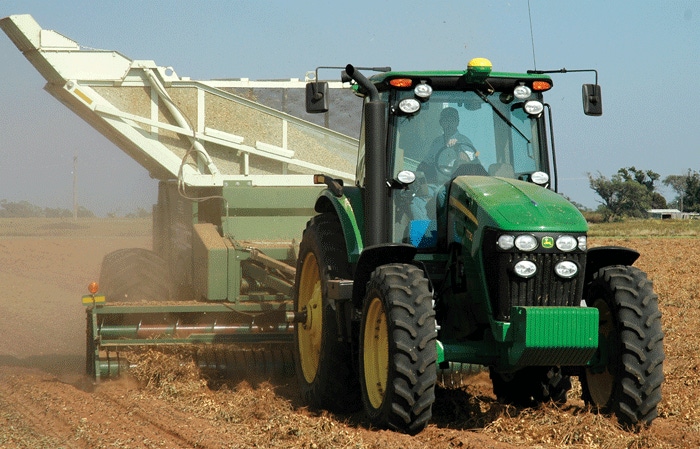September 4, 2012

While most attention in U.S. agriculture has been focused this summer on the devastating Midwestern drought, and justifiably so, parts of the lower Southeast have quietly climbed out of the most extreme dry conditions, and many growers are poised to harvest impressive yields.
As of mid-August, the U.S. Drought Monitor was reporting that rains in the Southeast had helped to improve drought conditions throughout Alabama, Georgia and South Carolina.
Exceptional drought — which is the most intense of the drought ratings — had been eradicated in Alabama and reduced in Georgia, while all other drought ratings also were reduced.
In Florida, only 12 percent of the state was rated as “abnormally dry” midway through August, and no parts of the states were listed in any of the drought categories. According to the state’s agricultural statistics service, frequent rains across Florida during July and August benefited most crops while making hay harvest difficult.
In Gulf County, plentiful rainfall was hindering some early cotton harvest and almost daily rains were increasing disease pressure on peanuts in Jefferson County.
Frequent showers also have provided adequate moisture for row crops in Escambia and Santa Rosa counties.
County Extension agents were reporting that showers had made it nearly impossible for growers to spray peanuts and cotton, and that farmers would need to be aggressive in their programs to contain leaf spot and fungal diseases.
Soybeans were responding very positively from hot, wet soil conditions.
Florida vegetable growers in Collier, Lee, Hendry, Glades and Charlotte counties were preparing land and laying plastic for planting fall crops beginning later in August. Hillsborough County producers were still harvesting small quantities of okra.
Statewide, the condition of pastures in Florida ranged from very poor to excellent with most pastures in good condition. The condition of the cattle was very poor to excellent with most in good condition.
Panhandle conditions
In the state’s Panhandle, conditions of pasture and cattle ranged from very poor to excellent. Pastures in Jefferson County improved following almost daily rains early in the week, and pastures in Okaloosa County showed some damage from dollar spot disease and bermudagrass stem maggot.
In the northern areas, the condition of pastures was poor to excellent and the cattle were fair to excellent with most in good condition.
In the central area, the pastures and cattle were in poor to excellent condition with the condition divided almost equally between fair, good and excellent.
Stock ponds in Brevard County were reported to be below normal levels, and in the southwestern area, the pasture and cattle were in fair to excellent condition with most in good condition.
Crops in Alabama also have responded well to rainfall during August. Regional Extension Agent Jack Tatum reported that showers had greatly improved the condition of crops and pastures in the central and eastern portions of the state.
Some areas, including a few in southeast Alabama, still were dry, although overall, drought conditions in the state are improved over this same time last year.
Scattered rainfall has brought drought relief to producers of most crops in Alabama except for corn, which suffered from early season dry conditions.
August crop conditions for cotton, corn, peanuts and soybeans show the crops to average 5 percent very poor, 14 percent poor, 41percent fair, 38 percent good, and 2 percent excellent. Soil moisture levels continued to improve across most of the state.
In Georgia, as in Florida, record peanut yields of more than 3,600 pounds per acre were predicted in August. Still, only half of the state’s subsoil moisture was rated adequate.
Extreme drought conditions persist in Georgia in a band that stretches from the southwest corner of the state to the northeast region.
Seventy-three percent of Georgia’s corn acreage was rated good to excellent in mid-August while 60 percent of the cotton acreage was good to excellent. Peanut producers reported that 77 percent of their crop was good to excellent while 55 percent of the soybean crop was in the same range.
About the Author(s)
You May Also Like




